Physical Address
304 North Cardinal St.
Dorchester Center, MA 02124
The maxillary antrostomy is the first step in performing functional endoscopic sinus surgery.
Based on a good working knowledge of the anatomy and using proper visualization and mucosa-sparing techniques, a well-performed maxillary antrostomy will not only address maxillary sinus disease but properly set up the remaining portions of the sinus surgery.
The uncinate process is composed of thin bone covered by mucosa. It has attachments superiorly to the agger nasi cell or skull base.
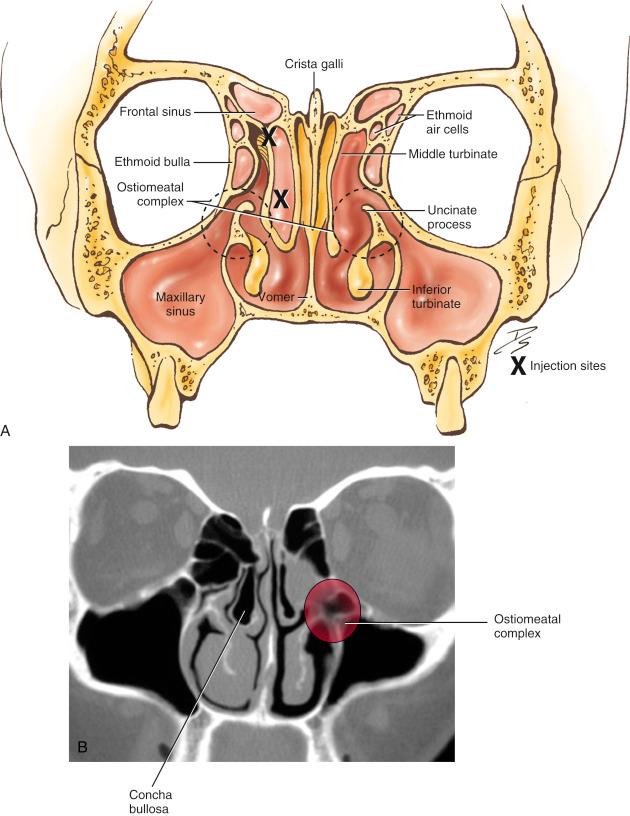
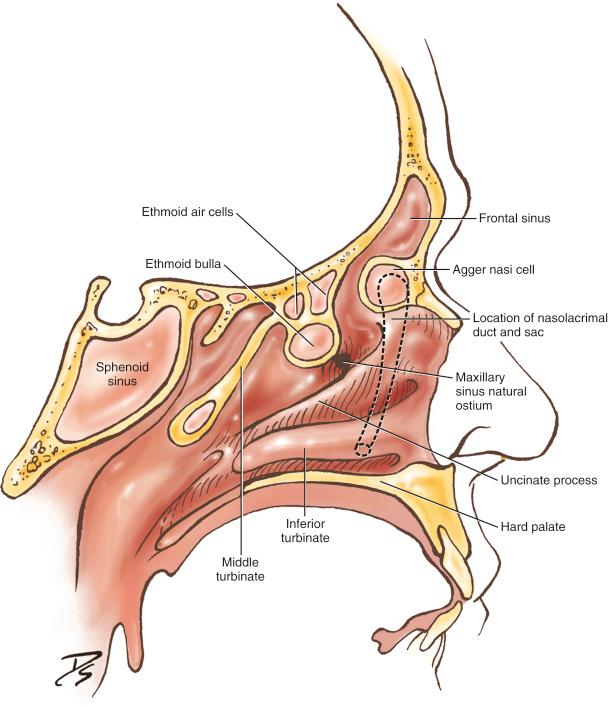
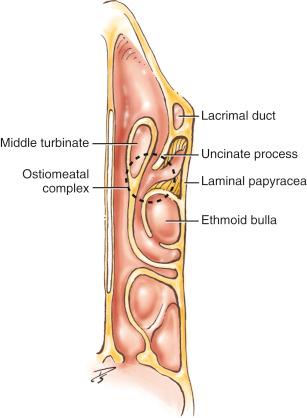
The uncinate process covers the infundibulum—the functional area where the maxillary sinus, anterior ethmoids, and frontal sinus drain.
The uncinate process attaches anteriorly to the lacrimal bone and is in the shape of a quarter moon. The posterior-inferior portion of the uncinate runs in a horizontal plane toward the posterior fontanelle.
The maxillary line is the attachment of the uncinate process to the lacrimal bone. The natural os of the maxillary sinus can be visualized at the junction of the lower 1⁄3 and upper 2⁄3 on the maxillary line ( Fig. 6.4 ). The ostiomeatal complex is a functional area not an anatomic area. Opening the ostiomeatal complex involves removing the uncinate process and ethmoid bulla as well as enlarging the natural maxillary ostium.
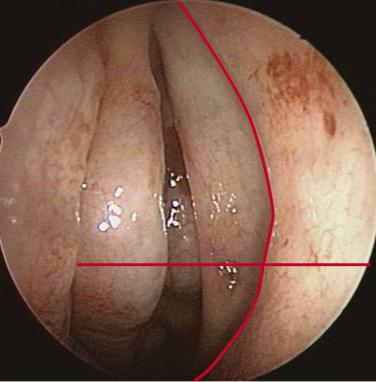
The middle turbinate serves to humidify inspired air. Care should be taken to preserve the middle turbinate if possible when performing a maxillary antrostomy. If removal is necessary, consider amputating only the anterior inferior quadrant of the turbinate.
Look at the axial and coronal computed tomographic (CT) scans
Identify the uncinate process and its relation to the medial orbital wall.
Beware of an uncinate process that is lateralized against the medial orbital wall ( Fig. 6.5 ). If identified, make sure to take great caution in using a sickle knife or microdébrider against the uncinate to prevent inadvertent orbital entry.
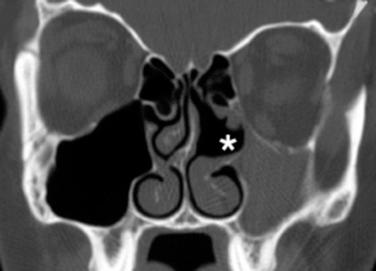
Identify the presence of any Haller cells, also called infraorbital ethmoid cells, that may be contributing to the obstruction of the middle meatus.
Identify the presence of any pathologic process along the floor and/or anterolateral walls of the maxillary sinus. If a retention cyst or polyp is present, make preparations to have angled instruments and endoscopes available to address these hard-to-reach locations.
0-degree and 30-degree endoscopes
45-degree or 70-degree endoscopes if lesions must be removed along the floor or anterior wall
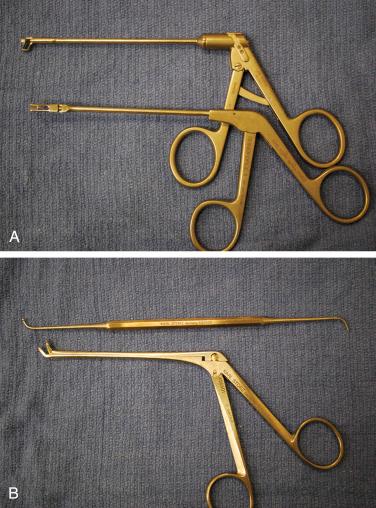
Ball-tip probe
Backbiter
Downbiter
Angled microdébrider
Straight through-cutter
120-degree giraffe
Used for removal of retention cysts along the anterior and/or floor of the maxillary sinus
The first 15 minutes after anesthesia induction is often a time when the patient’s heart rate and blood pressure are at their highest. Starting to operate before proper mucosal decongestion and local injection have been accomplished will often result in mucosal trauma and excess mucosal bleeding, especially in the areas of the anterior septum, anterior middle turbinate, and lateral nasal wall. Trauma to these areas will add to the difficulty of the remainder of the procedure.
Take at least 5 minutes to allow the vasoconstrictive pledgets to decongest the mucosa and local injections to take effect.
It is important to accurately place the nasal pledgets to optimize the visual field. A common mistake is to place the pledgets low in the nose, failing to decongest the nasal swell bodies, which can obscure endoscopic visualization of the middle meatus and frontal recess ( Fig. 6.7 ).
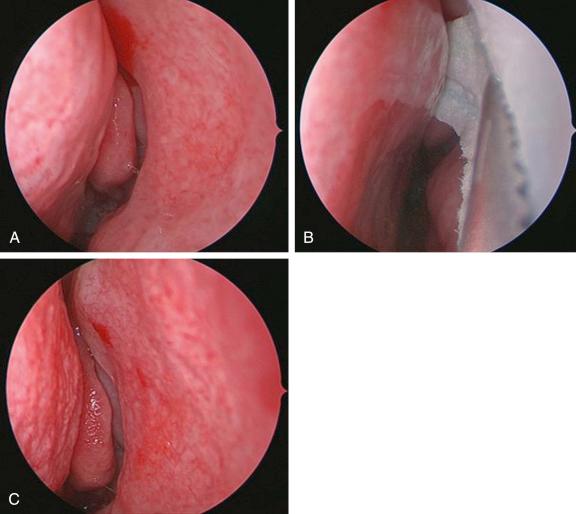
To avoid unnecessary trauma and clouding of the operative field, be careful in manipulation of the middle turbinate. To create more space to address the uncinate process, gently move the middle turbinate medially with a Freer elevator and slide an oxymetazoline-soaked pledget into the middle meatus for 5 minutes.
When in doubt, perform a septoplasty if a septal deflection is preventing access to the middle meatus. A septal deflection will not only make intraoperative access difficult but will also create problems for effective postoperative débridement.
Become a Clinical Tree membership for Full access and enjoy Unlimited articles
If you are a member. Log in here